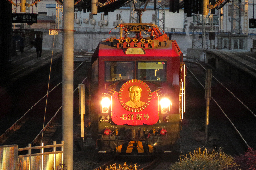Real question, I’d like to hear takes.
For years I lived in the same place so I knew how to get around. I also got around on bike/foot/transit. I rarely needed a navigation app.
But I recently moved to a new area, and the logistics of the move required me to get a car. With all the new places to learn, I started leaning on google nav more.
But every time it makes a route for me, it seems like it’s fighting against city planners. It will constantly direct me through little 1 way streets through residential neighborhoods if it thinks it can save .1 mile or 30 seconds.
As a concrete example, in my neighborhood the city planners have set up one road as the obvious exit, all the other roads have no lights or restrictions on turns. Navigation never uses that route, and prefers darting across lanes of traffic and turning during times it’s not allowed.
My partner and I joke about how many uturns it suggests. There’s a route I sometimes take where it suggests I make a 270 degree turn off a highway exit across 4 lanes of traffic.
In short, google drives like an asshole. It makes erratic decisions. And it routes people down roads that aren’t meant to carry lots of traffic.
I’m sure there’s some counterargument that this kind of navigation is load balancing and more efficient. But to me, I feel it makes things unpredictable and less pleasant to exist in a neighborhood.
is there any consensus on this stuff?


Probably not?
I mean, I can’t live without it at this point.
Not that I’m condoning Google at this point; we could always use better software for these things.
And to be clear, I’m not advocating against apps altogether. Just that the way they’re implemented seem to ignore any urban designing. There’s no real weighting to roads meant to carry through-traffic. Sometime it feels like it’s simple floodfill pathfinding.
I think you’re right. AFAIK Google tracks the real-time position of every android device with GPS and location services turned on and uses that to evaluate traffic, then route people around traffic congestion. The algo is essentially trying to work around the appalling failures of “Just one more lane bro i promise just one more lane!” by utilizing all available streets to get from A to B. It is subverting urban design, but in the US at least urban design is terrible and actively counter-productive, consistently making traffic worse in many cases. This does cause problems - Lots of traffic through neighborhoods and increased wear on roads that were never intended to support serious traffic. But it’s a reflection of the system trying to find a workable route through the terrible design of urban America.
i feel like Google Maps is pretty freakishly accurate about traffic. I’ll map the route from my moms house just to make sure i’m not getting screwed.
I find google pretty bad for finding new public transit routes even though it’s decent at time estimates.
A lot of the time it takes me to less-connected stops that are slightly closer, even though an extra 2 minute walk is worth it to go to the stop that has more busses or trains flowing through it.
I always have to look at which stops are near me, and the routes near me to make a decision as to where to go
I think it optimizes for time and fuel costs, which works most of the time. In my area it almost always takes you along through roads (though it’s also kind of e-z mode here). Very annoyingly though the edge cases end up with people driving way too fast by elementary schools.
Fair.